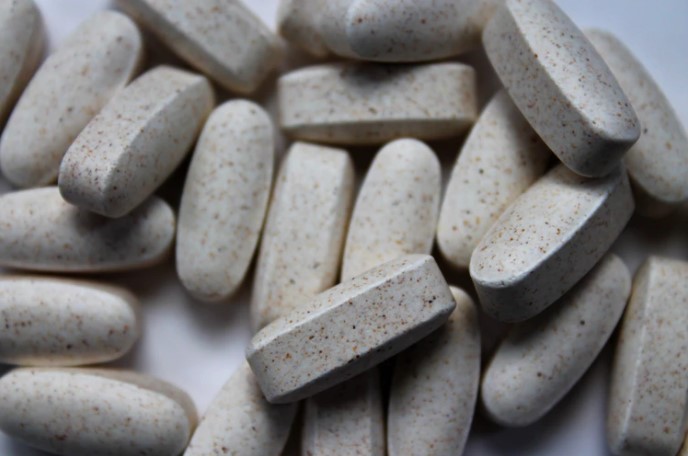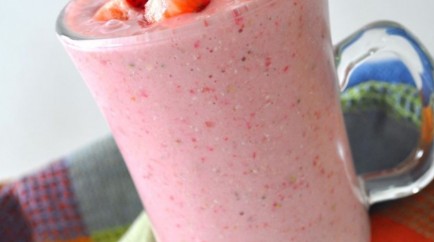“All diseases begin in the gut,” Hippocrates, the founding father of modern medicine, once said. And thousands of years later, with gastrointestinal issues mounting and contributing to a host of other taxing conditions, the world is finally listening. Over the past decade, the use of probiotics has surged in combatting imbalance within the gut microbiome, which contains 100 trillion bacteria and effects everything from weight gain to mental well-being. “Probiotics are good bacteria that promote a healthy digestive system,” explains functional-medicine expert Frank Lipman, M.D. “They help combat harmful bacteria, aid in absorbing nutrients and proper digestion, promote a strong gut lining, reduce infections and inflammation by enhancing the body’s immune system, and optimize mood.”
But it’s important to understand that while probiotics have always had plenty to offer the gut, their use has become that much more critical due to drastic diet and lifestyle changes over the past 100 years, particularly in the West. “Many aspects of the modern lifestyle, from the discovery of antibiotics to the use of pesticides and GMOs in our food to the high stress environments we live in, effect the microbiome and have really put new stress on our gut barrier,” explains Vincent Pedre, M.D., medical director of Pedre Integrative Health and author of Happy Gut.
Probiotics can be particularly beneficial for women, given that they’re affected by hormone fluctuations and are reporting rising stress levels and accompanying physical and emotional symptoms in higher numbers than men in the U.S. “In my female patients, some of benefits I’ve observed are clearer skin, improved bowel movements, a reduction in bloating, and less yeast overgrowth, which is what causes vaginal yeast infections,” explains Pedre.
Suffice it to say: Every woman could consider adding a probiotic into the mix. But just as important as incorporating it is knowing how to navigate the endless options on the market—from supplements to kefirs and jar ferments—as well as how the rest of your lifestyle plays into honing the benefits of a probiotic. From decoding the different probiotic strains to taking a 360-degree approach to gut health, experts weigh in on how to deliver beneficial bacteria the right way.
Get Familiar With the Big Probiotic Players—and Their Benefits
While getting into the nitty-gritty of all the different, practically endless species of probiotic bacteria is, in a word, dizzying, it’s helpful to know the most popular strains you’ll come across at your local health store and which ones will best serve you. According to Pedre, the most common are Lactobacillus, which supports digestion and immune function, as well as reduces anxiety; Bifidobacterium, which helps digest fiber, supports metabolic processes such as regulating blood sugar, and improves brain function; and Saccharomyces, which is technically a “friendly yeast” that is antibacterial, and thus aids in preventing disease and supporting skin health (in a different, but equally robust way, than topical probiotic skin care). Most supplements contain a cocktail of these varying probiotic strains, designed to deliver a one-two punch of healthy bacteria that supports overall health and the diversity of the gut’s microflora.
Considering the Right Dosage Is Crucial to Your Success
For the average consumer, the most important thing to factor in is the number of billions of CFUs in a supplement. Pedre’s rule of thumb is: “The sicker the patient, the higher the strength,” he says, adding that as someone gets better, the strength of the probiotic can be lowered. A good place to start? The 20- to 30-billion range listed on the back of the bottle if you consider yourself healthy. From there, Pedre recommends 50 billion if you have minor gut issues and 100 billion if you’ve been on antibiotics. The 225-billion-and-above range is reserved for those who suffer from chronic gastrointestinal issues or yeast infections and should be taken under the supervision of a doctor, he says. Once you’ve settled on a dosage, try it out for couple of months, pay attention to how you feel, and listen to your body: “If you feel bloated, cut back,” says Lipman, adding that those who suffer from gastrointestinal conditions, such as SIBO, may not benefit from a probiotic initially. He also recommends switching up your probiotic every three to six months to ensure you’re introducing new, beneficial flora often.
Choose Between Shelf-Stable and Refrigerated Supplements
In terms of deciding between shelf-stable and refrigerated probiotic supplements, it’s ultimately a matter of lifestyle. “Refrigeration reduces the decay of the product over time and helps it maintain its potency for longer,” explains Pedre. “If you’re not as consistent when taking probiotics, then it’s probably better to have one that’s refrigerated.” But if you know daily follow-through won’t be an issue, blister-packed, shelf-stable supplements used within the expiration date are fine. Lastly, when it comes down to choosing a brand, Pedre suggests researching how reliable a brand and where their materials originate from (an organic agriculture source is ideal), as well as if there have been any consumer reports that have called their integrity into question. In addition to his own Happy Gut Life line, Pedre also recommends probiotic offerings from Ortho Molecular and Garden of Life to his patients for their high quality and sustainably sourced ingredients.
Examine the Rest of Your Lifestyle—and Your Diet
As rewarding as taking a probiotic can be, it’s only one piece of the puzzle. “If you’re eating a lot of unhealthy comfort foods, out drinking every night, and not getting enough sleep, taking a probiotic isn’t then protecting you from the damage that causes,” says Pedre, stressing that a healthy diet, daily exercise, and eight hours of sleep are essential to the bigger picture of gut health. To recalibrate your diet to enrich microflora diversity, adding probiotic-rich foods is great start. Lipman’s go-tos include kimchi, sauerkraut, fermented miso and vegetables, and full-fat coconut yogurt.
Drink Your Probiotics—but Only Within Reason
And then, there are the predominant probiotic beverage categories: kefir and kombucha. Pedre enthusiastically endorses the former, highlighting that you can get high, multibillion counts of probiotics in a homemade kefir, but is more cautious about the latter, particularly for women, as it’s very high in sugar, which is a food source for yeast. “Don’t drink kombucha as if you’re drinking a Snapple,” he cautions. “I usually buy a bottle of kombucha, whichever one has the lowest amount of sugar, and drink it a shot at a time over the course of few days.” For a low-sugar alternative, Pedre recommends Farmhouse Culture’s “gut shots” in green cabbage and ginger beet juices, taken before meals to aid digestion.
Original article: https://www.vogue.com/article/best-probiotics-for-women-digestive-health-supplements-fermented-foods-drinks-kombucha-kefir-diet-exercise































Comments